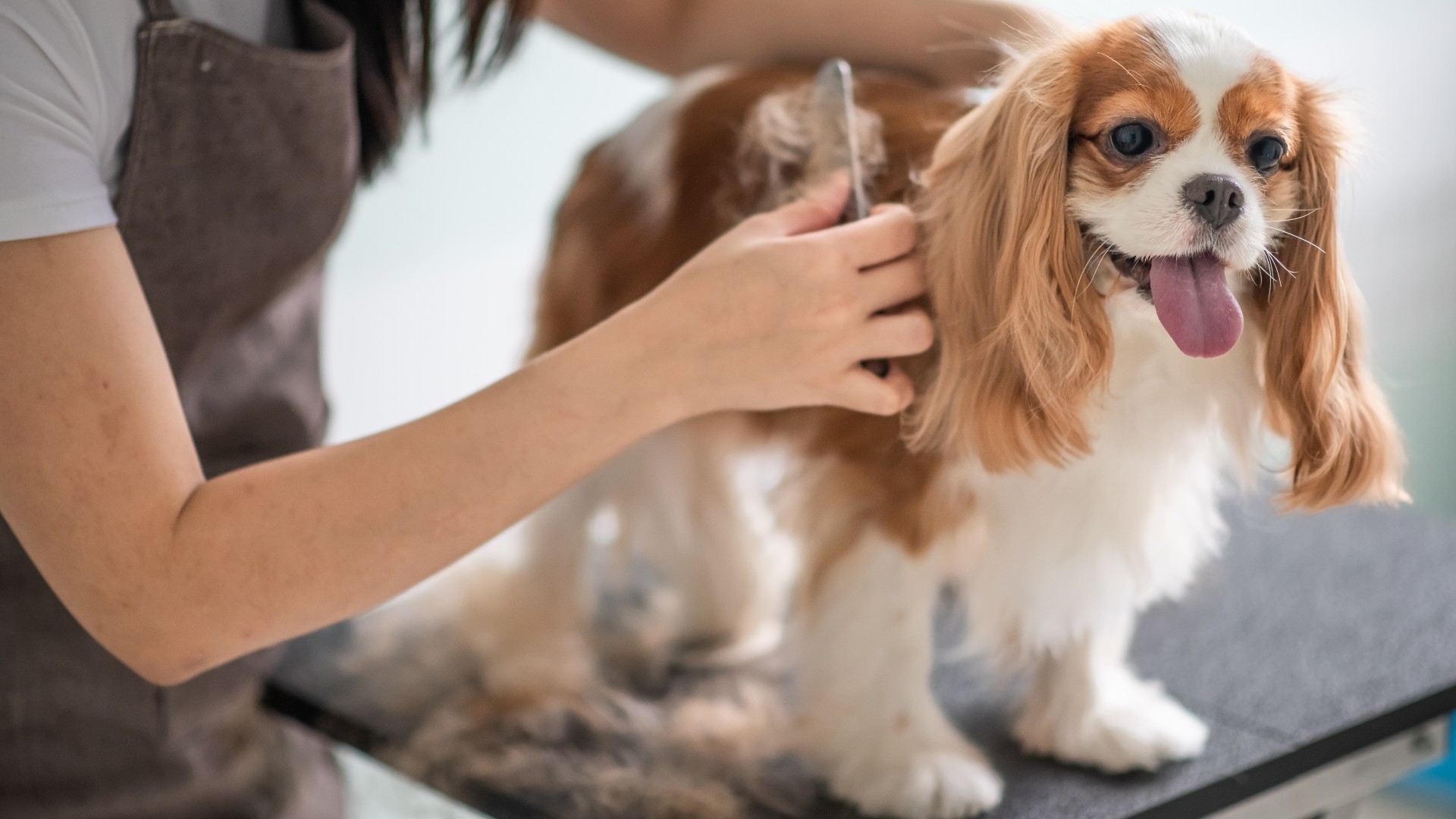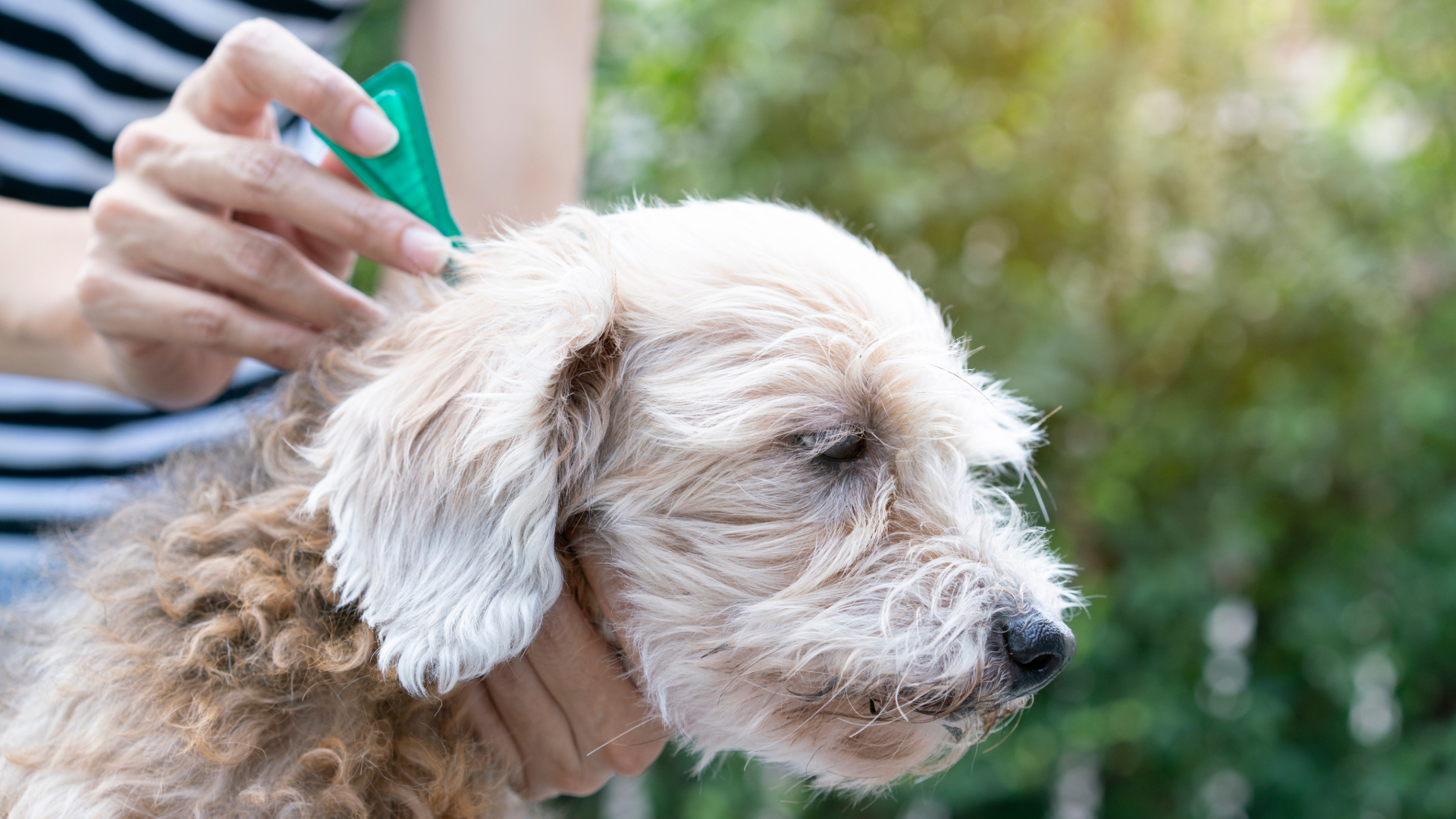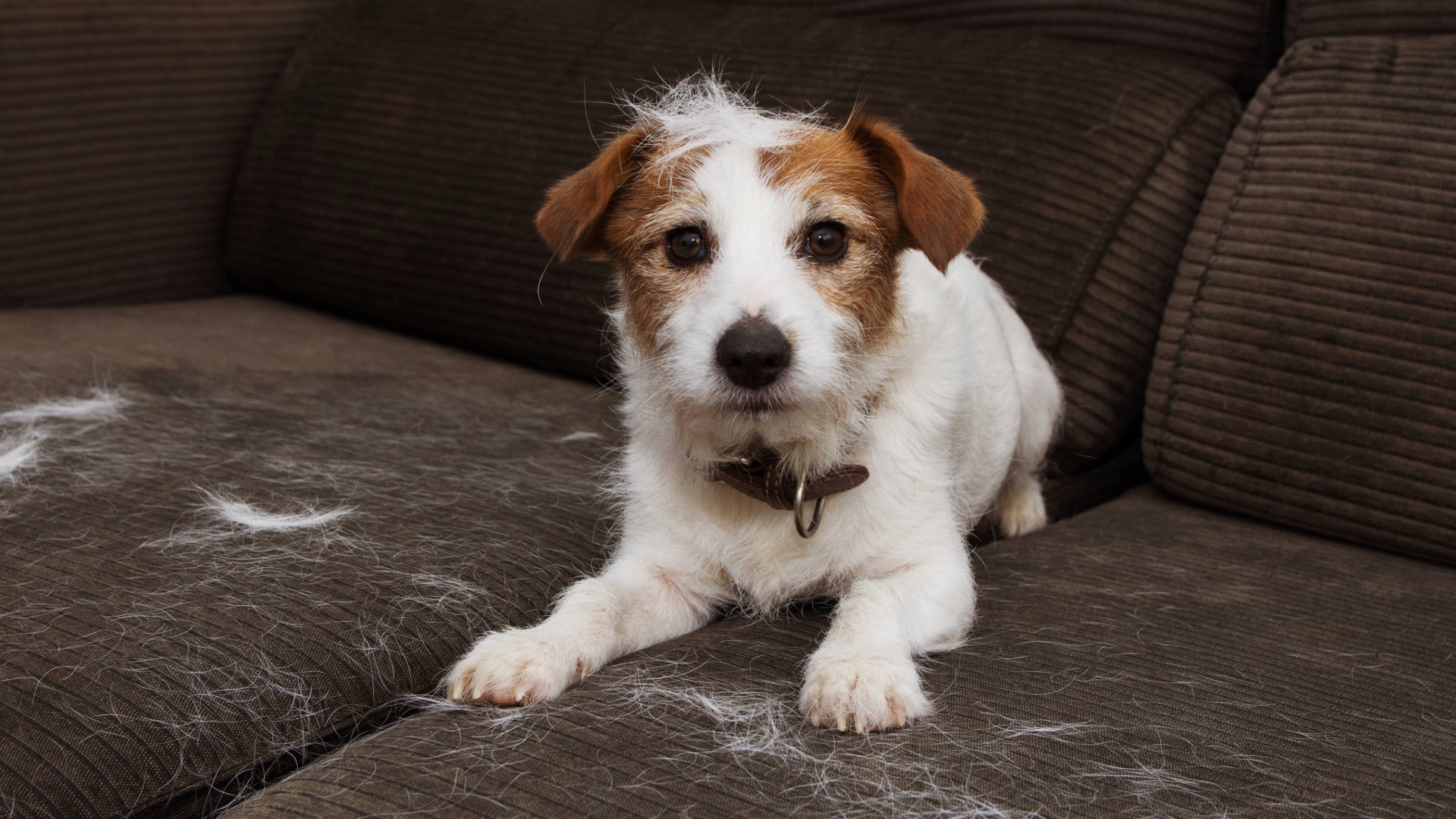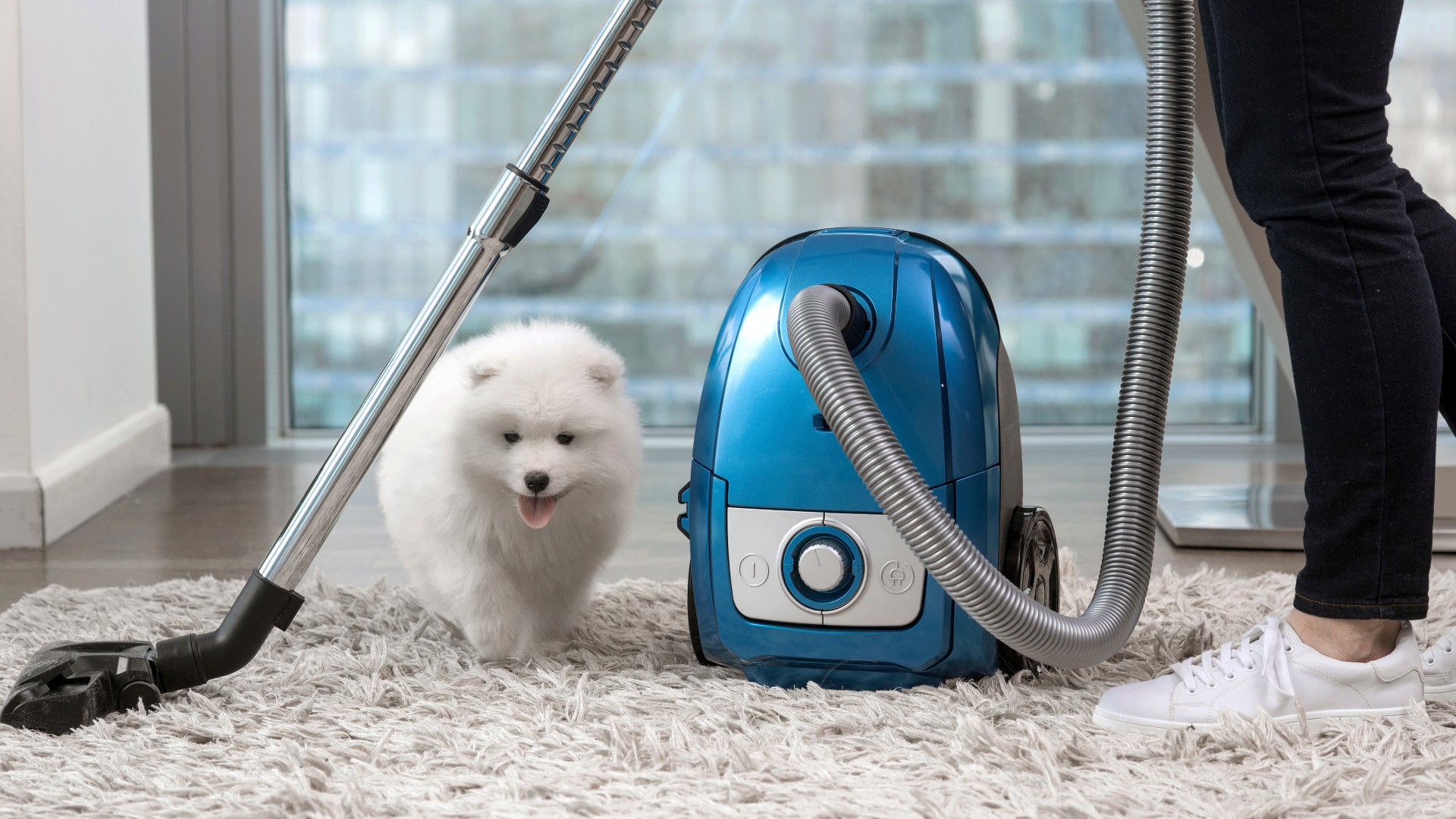
If you’re a pup parent, you’ll know how frustrating dog shedding can be. From your clothes and car to your furniture and floors, their hair gets absolutely everywhere – and keeping on top of it can feel like a never-ending job, even with the best vacuum cleaners for pet hair!
As tedious as it is, dog shedding is a natural process that allows our pets to get rid of old, damaged hair to make way for the new. It happens most during the spring and fall, but the amount your dog sheds will depend on their breed, coat type, health, and diet.
If your dog is shedding excessively or the shedding is accompanied by other symptoms, it’s important to get them checked by a vet, as it could indicate an underlying health condition. Below, we’ve shared our top tips for managing dog shedding, with expert advice from vet Dr MacMillan.
How to manage dog shedding
1. Choose a low-shedding breed
If you’re looking for a furbaby to join your family, then the degree to which your desired breed sheds is worth thinking about before you welcome your new pup into your home. Many breeds are low-shedding, making them a great choice for those with allergies or for busy pet parents who don’t want to have lots of additional cleaning to do.
While it may seem logical that short-haired breeds would shed less than long-haired ones, don’t be fooled as often the opposite can be true. Check our breed profiles to find examples of low-shedding dogs, such as the Labradoodle or the French Bulldog.
2. Groom your dog regularly

Learning how to groom a dog is the single most important thing you can do to reduce shedding. Regular brushing with the best dog brushes can help remove loose hair and keep it from falling all over your floors and furniture.
Bathing your dog every few months with a grooming glove can also assist with loosening and removing hair while nourishing the skin to create healthier and stronger hair follicles. Follow this up with a brush once your dog is dry, and you can significantly combat shedding.
3. Use the correct brush
To ensure you get the best results possible, choose a brush that's suitable for your dog's coat type, and speak to a groomer if you're unsure what that is. Slicker brushes are a great choice for sensitive fur, while bristle brushes are better for shorter coats.
4. Healthy diet and supplements

Dogs with healthy coats tend to shed less, and one of the best ways you can promote a healthy coat is by feeding your dog a varied and nutritious diet. If you notice your dog is shedding particularly badly, it might be worth speaking with your vet to see if changing their diet could be helpful.
Dr MacMillan says: "A good quality complete diet is essential for a healthy coat, but supplementing this with essential fatty acids may help to improve your dog’s skin and coat condition further. In some cases, this may reduce shedding, too. Look for a pet-specific supplement that contains fish oils, a rich source of omega-3."
5. Keep them hydrated
Making sure your dog is never thirsty is another way to prevent excessive shedding, as dehydration can cause the loss of both old and healthy hair. It can be easy not to spot when a water bowl is empty, so it might be worth keeping various bowls around the house in different rooms available for your dog. To tempt them with fresh water, you could even invest in one of the best pet water fountains.
6. Keep on top of your flea treatments

Pesky fleas are not only uncomfortable for your dog, but they can also lead to an increase in shedding, especially if your dog is itching and scratching excessively. Check your furkid regularly for signs of fleas, and keep on top of flea control and prevention with the best flea treatments for dogs.
7. Try a dedicated de-shedding tool
If your dog is a heavy shedder, then you can even try a dedicated de-shedding tool. It’s a cost-effective way to help reduce fur around the home, especially if you’re reluctant to fork out for regular trips to a groomer. Find more useful tools in our best dog grooming kit round-up.
8. Look after your soft furnishings

Even when you’ve made peace with dog shedding, it doesn’t mean you want to get up from your favorite chair and find it all over your new jeans. There are some wonderful tools on the market that can help keep your soft furnishings free of pesky fur and save your clothes in the process.
Depending on how much shedding your pooch is guilty of, there are options for light de-fuzzing up to more heavy-duty solutions. On a basic level, lint rollers or even sticky tape can be a quick and easy way to remove fur from a cushion or a t-shirt, but also look out for dedicated fur removal mitts and fur catchers you can pop in the washing machine. For more ideas, read our guide on how to get dog hair off your couch.
9. Keep an eye on your dog’s health
Although some shedding is perfectly normal, excessive shedding can be a sign of a bigger problem. While shedding for most breeds increases in the spring and fall, shedding too much hair can be a sign of a parasite, fungal infection, or thyroid imbalance. If you notice your dog is shedding more than usual, we recommend speaking with your vet to rule out any underlying health conditions.
Dr MacMillan says, "If your dog is shedding excessively and you are noticing bald patches or areas of skin inflammation, then book an appointment with your vet. There are many underlying health conditions that can cause extreme shedding."
10. Don’t forget floors

The floor is where you’ll likely find the majority of your dog’s discarded fur and hair, and if you don’t keep on top of it, it can build up and cause a problem. Thankfully, pet vacuums have been designed to suck up even the most deeply embedded fur and dirt, tackling carpets, hardwood floors, and upholstery with ease.
How do I stop my dog from shedding so much?
It's impossible to stop your dog from shedding altogether, but it can be managed by following the advice above. However, if you think your dog is shedding abnormally, persistently, or has accompanying symptoms, it's worth getting them checked over by a vet to rule out underlying health conditions.
Dr MacMillan says: "Shedding is a completely normal process in dogs, in just the same way that we lose old hair and grow new ones. But if you have concerns about shedding, your choice of dog will be an extremely important factor. Some breeds shed more than others, so selecting a low-shedding breed can make a big difference to the amount of loose hair in your home.
"If your dog is shedding excessively and you are noticing bald patches or areas of skin inflammation, then book an appointment with your vet. There are many underlying health conditions that can cause extreme shedding."
These can include:
- Allergies
- Hormonal imbalances
- Skin conditions
- Stress
- Malnutrition
- Parasites
- Disease
- Tumors
What month do dogs shed the most?
Dogs shed the most during the spring and fall seasons.
Read next: Low-maintenance dog breeds and which dogs shed the most
Edited by Georgia Guerin and Alexis De Leaver.
This page was last updated in June 2025 by Megan Milstead.







